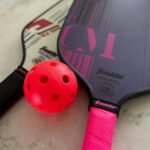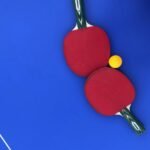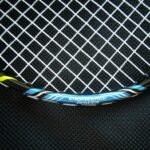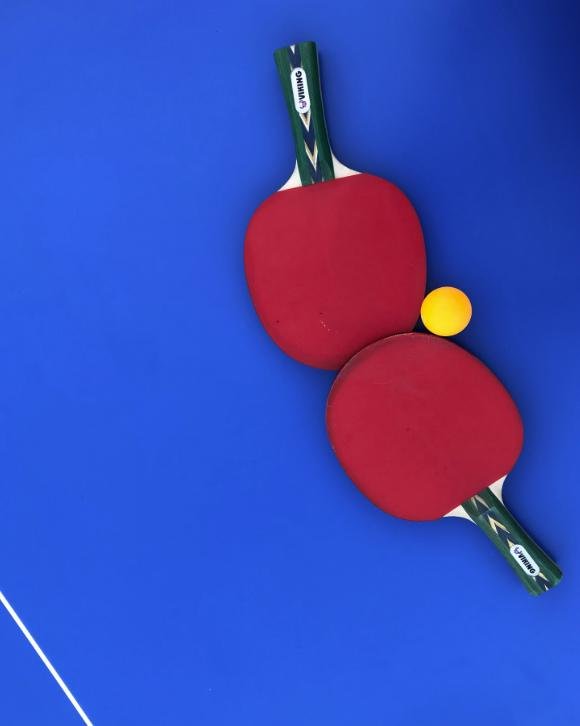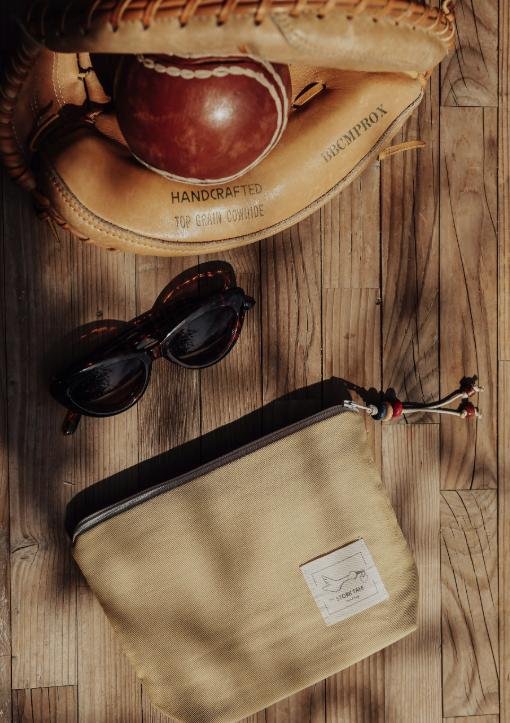Ping pong paddles, also known as table tennis rackets, are essential tools for anyone involved in the sport, ranging from casual players to seasoned professionals. These paddles consist of a blade, which is typically made from layers of wood, and their surfaces are covered with rubber that influences ball spin and speed. The choice of both blade and rubber can significantly affect gameplay, making it vital for players to understand the implications of their paddle features.
There are various types of ping pong paddles available in the market, generally categorized into two groups: pre-made paddles and custom paddles. Pre-made paddles are assembled by manufacturers and provide a convenient option for beginners or recreational players. In contrast, custom paddles allow players to select specific blades and rubber sheets tailored to their playing style, thus offering a personal touch that can enhance performance. While the price range varies significantly between these categories, investing in the right paddle can provide substantial benefits during gameplay.
Understanding the lifespan of your ping pong paddle is crucial for maintaining optimal performance in the sport. As paddles age, the materials can wear down, affecting not only the quality of play but also overall enjoyment. For players at all levels, recognizing the signs of wear can help determine when it is time to replace or maintain the equipment. Regular care, such as cleaning the rubber surfaces and storing the paddle correctly, can extend its usability, enhancing both performance and longevity. Thus, whether one is a novice learning the basics or a competitive player honing their skills, being informed about paddle types and maintenance is essential for maximizing the sporting experience.
Factors Influencing Paddle Longevity
The lifespan of a ping pong paddle can vary significantly based on multiple factors, which include the quality of materials used, the frequency of play, playing style, and maintenance routines. Understanding these elements is essential for players to make informed decisions about their equipment, ensuring optimal performance and longevity.
The quality of materials is arguably the most critical factor affecting a paddle’s durability. High-quality paddles, often constructed from premium wood and advanced rubber, tend to last longer than their lower-quality counterparts. A well-made paddle can withstand intense gameplay and frequent strikes, while inferior products may succumb to wear and tear quickly. Additionally, thicker rubber and better glues can enhance the rubber’s lifespan, affecting the overall durability of the paddle.
Frequency of play also significantly influences paddle longevity. Players who engage in regular, high-intensity matches will experience more rapid deterioration of their paddles compared to those who play recreationally. Competitive players often hit the ball harder and more frequently, which can lead to accelerated wear on the rubber surface and wooden layers. Conversely, occasional recreational players typically utilize their paddles less, allowing for a longer lifespan.
Moreover, a player’s style can contribute to the wear and tear of their equipment. Aggressive players or those who frequently employ spin or power shots may find that their paddles wear out faster due to the increased friction and impact. On the other hand, players who focus on finesse and light touches might experience less daily stress on their paddles, extending their useful life.
Finally, proper maintenance routines can dramatically enhance the longevity of ping pong paddles. Regular cleaning, protective covers, and controlled storage conditions can help preserve the rubber and wood from environmental damages and reduce the need for premature replacements.
Signs Your Paddle Needs Replacing
Determining when to replace your ping pong paddle is essential for maintaining optimal performance during play. Several signs can indicate that it is time for an upgrade. One of the most obvious indicators is visible damage to the paddle’s blade or rubber. If you notice any cracks, chips, or significant wear on the rubber surface, these imperfections can greatly affect the spin and speed of your shots. A damaged paddle may not provide the same level of control or power, which could hinder your competitive edge.
Another critical sign to look for is a loss of grip. The handle of the paddle may become slippery over time, especially if it has been exposed to sweat and moisture during gameplay. This can result in decreased stability when executing shots, leading to poor performance. Regular inspection of your paddle’s grip is advisable, and if it feels uncomfortable or unsteady in your hand, this may indicate it’s time for a replacement.
Furthermore, a noticeable decline in spin and speed can also suggest that your paddle is nearing the end of its lifespan. As the rubber wears out, it loses its ability to generate the desired spin on the ball. If you find that you are struggling to achieve the same level of spin or speed that you once enjoyed, it may be time to consider investing in a new paddle.
Lastly, alterations in the feel of the paddle during play can be a significant warning sign. A well-maintained paddle should provide consistent feedback and comfort. If you experience a change in how the paddle responds to your strokes or it feels different from what you are accustomed to, it could be an indication that it requires replacement. By paying attention to these signs, players can ensure they are equipped with the best possible gear for their ping pong matches.
Typical Lifespan of Different Paddle Types
The longevity of a ping pong paddle significantly varies based on the paddle type and the frequency of use. Generally, paddles can be categorized into three main types: beginner, intermediate, and professional. Each category possesses its unique characteristics that influence durability and performance over time.
Beginner paddles, often constructed from less expensive materials, typically have a lifespan ranging from six months to one year with regular usage. These paddles are designed for novices who are just starting to learn the fundamentals of the game. While they may not provide the best performance or spin, they serve as suitable tools for developing basic skills. As players progress and improve their techniques, they often choose to upgrade to intermediate or advanced paddles.
Moving on to intermediate paddles, these models generally offer a better quality of materials and design, which contributes to an extended lifespan of approximately one to two years of regular play. Intermediate players require paddles that can deliver improved spin and control, and these paddles are often made from wood that balances speed and feel. The investment in an intermediate paddle proves beneficial as players refine their skills and participate in more competitive settings.
On the other end of the spectrum, professional ping pong paddles are typically constructed with high-quality materials and advanced technology, resulting in a longevity of two to five years or more. Players at this level often engage in rigorous training and competition, relying on a paddle that maximizes performance and responsiveness. The maintenance of these paddles is crucial; regular cleaning and proper storage can significantly enhance their durability.
In summary, the lifespan of ping pong paddles greatly depends on the skill level of the player and the quality of the paddle itself. Understanding the expected longevity of each type can help players select the right equipment that aligns with their playing style and commitment to the sport.
Maintenance Tips to Extend Paddle Life
To ensure the longevity of your ping pong paddle, proper maintenance is crucial. One of the primary methods to prolong the life of your paddle is through regular cleaning. After each use, wipe down the paddle’s rubber surface with a damp cloth to remove dust and dirt. It is advisable to use specialized cleaning solutions designed for table tennis paddles, which can aid in maintaining the rubber’s grip and preventing the buildup of grime that could affect performance. Avoid using abrasive materials that may damage the rubber.
Storage practices also play a significant role in maintaining a paddle’s condition. It is recommended to store your paddle in a protective case to shield it from environmental factors such as humidity and temperature fluctuations. Keeping it away from direct sunlight is essential, as prolonged exposure can warp the blade and degrade the rubber. When not in use, avoid placing heavy objects on or near the paddle to prevent unintended pressure that may distort its shape.
Another important aspect of paddle maintenance is protecting both the rubber and the blade. Applying specialized protective sheets during storage can help maintain the rubber’s tackiness and prevent it from drying out. Additionally, inspect your paddle regularly for any signs of wear or damage, such as cracks in the wood or peeling rubber. Promptly addressing any issues found during inspections can significantly extend the paddle’s lifespan and ensure it remains in optimal playing condition.
In doing so, you not only preserve the performance of your ping pong paddle but also enhance your overall playing experience. By incorporating these simple maintenance practices into your routine, you can enjoy your paddle for many games to come.
Comparing Paddle Brands and Durability
When considering the longevity of a ping pong paddle, brand reputation plays a significant role in determining durability. Various paddle manufacturers are known for their commitment to quality, and understanding these differences can lead to informed purchasing decisions. Brands such as Butterfly, Stiga, and DHS have long-standing histories in the sport, often correlating with higher user satisfaction and increased durability.
Butterfly, a leading manufacturer, is praised for its craftsmanship and attention to detail. Their paddles are constructed using high-grade materials, which contribute to their impressive longevity. Users frequently report that Butterfly paddles maintain their performance characteristics even after extensive play, making them a preferred choice for serious competitors. Similarly, Stiga also enjoys a solid reputation, particularly with their Classic series, where players commend the consistency and durability achieved through rigorous testing and innovative design. These features make Stiga paddles a viable option for recreational and professional players alike.
DHS, another prominent brand in the ping pong industry, specializes in equipment that caters to different levels of gameplay. Their paddles are known for endurance, particularly the Hurricane series, which incorporates high-quality rubbers designed to withstand frequent use. Customer reviews often highlight the impressive resilience of these paddles, paired with excellent control and spin abilities, further enhancing their appeal.
In comparing these brands, it becomes evident that materials used, craftsmanship, and brand history significantly impact paddle durability. As each player has unique needs, it is prudent to consider user reviews and expert insights about specific models. Overall, selecting a paddle from a reputable brand known for longevity will likely yield a more satisfying and enduring experience on the table.
When to Upgrade Your Paddle
For ping pong enthusiasts and competitive players alike, understanding when to upgrade a paddle can greatly influence performance and enjoyment of the game. One primary factor to consider is the player’s skill level progression. As a player becomes more skilled, their playing style may evolve, necessitating a paddle that complements their advanced techniques. Beginners often start with basic paddles that prioritize durability and control. However, as a player’s proficiency increases, they may seek paddles that enhance speed, spin, and overall maneuverability to match their growing expertise.
Another significant aspect to think about is changes in playing style. Players often develop unique techniques that may require specific paddle characteristics. For example, a player who has transitioned from a defensive to an aggressive style might need a paddle that offers greater flexibility and responsiveness for executing powerful shots. Observing personal gameplay and identifying performance enhancements can guide decisions regarding paddle upgrades.
Furthermore, technological advancements in paddle design play a crucial role in determining when to upgrade. The ping pong industry continuously innovates with new materials, coatings, and designs that improve grip, ball control, and speed. Staying informed about these developments can be beneficial, especially for competitive players who aim to maintain a competitive edge. Upgrading to a paddle equipped with the latest technology can provide significant advantages in terms of performance and comfort.
Ultimately, players should reflect on their unique experiences, progressions, and the way the game evolves for them. Analyzing performance, recognizing shifts in style, and staying updated on innovations can aid in making informed decisions about when to invest in a new ping pong paddle. Regular assessment of one’s equipment is key to achieving optimal results on the table.
User Experiences: Lifespan Stories from Players
The longevity of a ping pong paddle can vary significantly depending on individual usage, maintenance, and the intensity of play. For casual players, some report that their paddles can last for several years with moderate use. For instance, a recreational player shared that their paddle, purchased five years ago, remains in good condition, primarily due to proper storage and infrequent use. Regular cleaning and care can greatly extend a paddle’s life, making it a viable option for less intensive play.
Conversely, competitive athletes tend to have different experiences. Players at higher skill levels use paddles more frequently and often subject them to rigorous conditions during tournaments. One professional player recounted having to replace their paddle every six months due to the wear and tear experienced in training and competition. The constant impact and friction against the table can lead to significant surface degradation, necessitating a replacement to maintain optimal performance.
Additionally, the type of materials used in a paddle can influence its durability. Some players prefer high-end paddles that use advanced technology, while others are satisfied with basic models. A player who invested in a premium paddle noted that while it provided exceptional performance, its lifespan was still only around a year of intense usage, highlighting the trade-off between quality and longevity. Such variations illustrate that the experiences of players are not uniform; rather, they depend heavily on individual playing styles, levels of competition, and maintenance practices.
As seen through these anecdotes, a ping pong paddle’s lifespan can range widely across the player spectrum. Casual users may enjoy long-lasting equipment, whereas those in competitive scenarios may find themselves replacing their paddles more frequently to ensure they maintain peak performance characteristics.
Conclusion: Making the Right Choices for Longevity
Understanding the lifespan of a ping pong paddle is crucial for players at all levels. The durability of paddles can vary widely based on factors such as construction, materials, and frequency of use. Players who engage in casual play may find that their paddles last several years, while those who play competitively might need to replace their paddles more frequently due to increased wear and tear. Regular maintenance is also a significant factor in extending the life of ping pong paddles. Taking the time to clean and properly store paddles can prevent unnecessary damage and help maintain performance.
It is equally important to recognize the signs that indicate a paddle has reached the end of its useful life. Deterioration of the rubber, a loss of grip, or significant damage to the blade are all indications that it’s time to consider a replacement. Players need to assess their paddles periodically to ensure they are performing optimally. This proactive approach not only improves gameplay but also supports the longevity of the equipment.
Moreover, investing in a high-quality paddle may yield better long-term results. While budget options are available, they may not offer the same durability and performance benefits as higher-end models. By selecting paddles and care strategies deliberately, players can create a balance between performance and longevity. Taking a measured approach to equipment choices helps to improve one’s overall experience in the sport.
As we conclude, we encourage readers to reflect on their experiences with ping pong paddles. Your insights can aid others in understanding the importance of paddle longevity and maintenance. Feel free to share your thoughts or inquire about any specific topics related to paddles in the comments section below.


